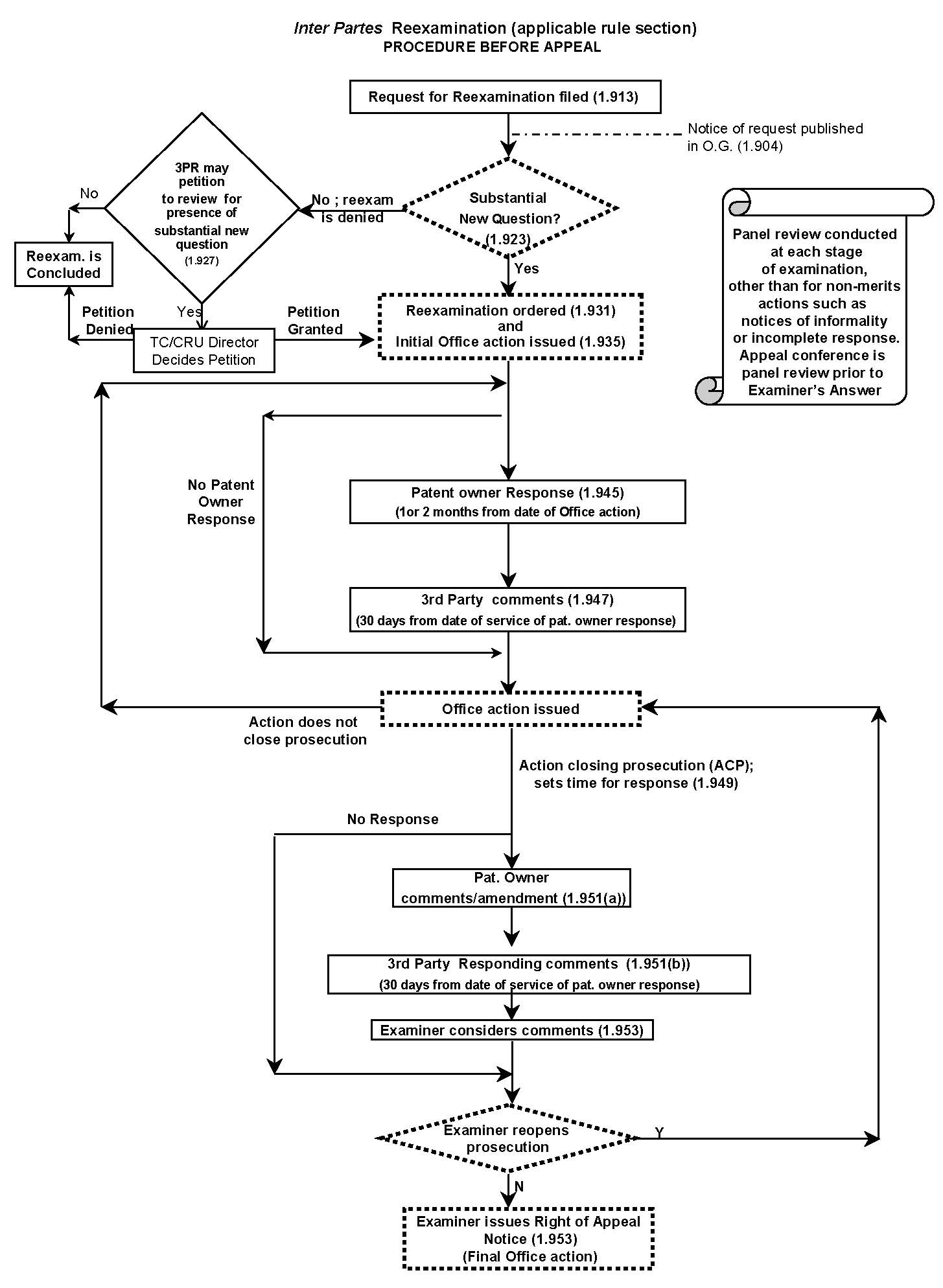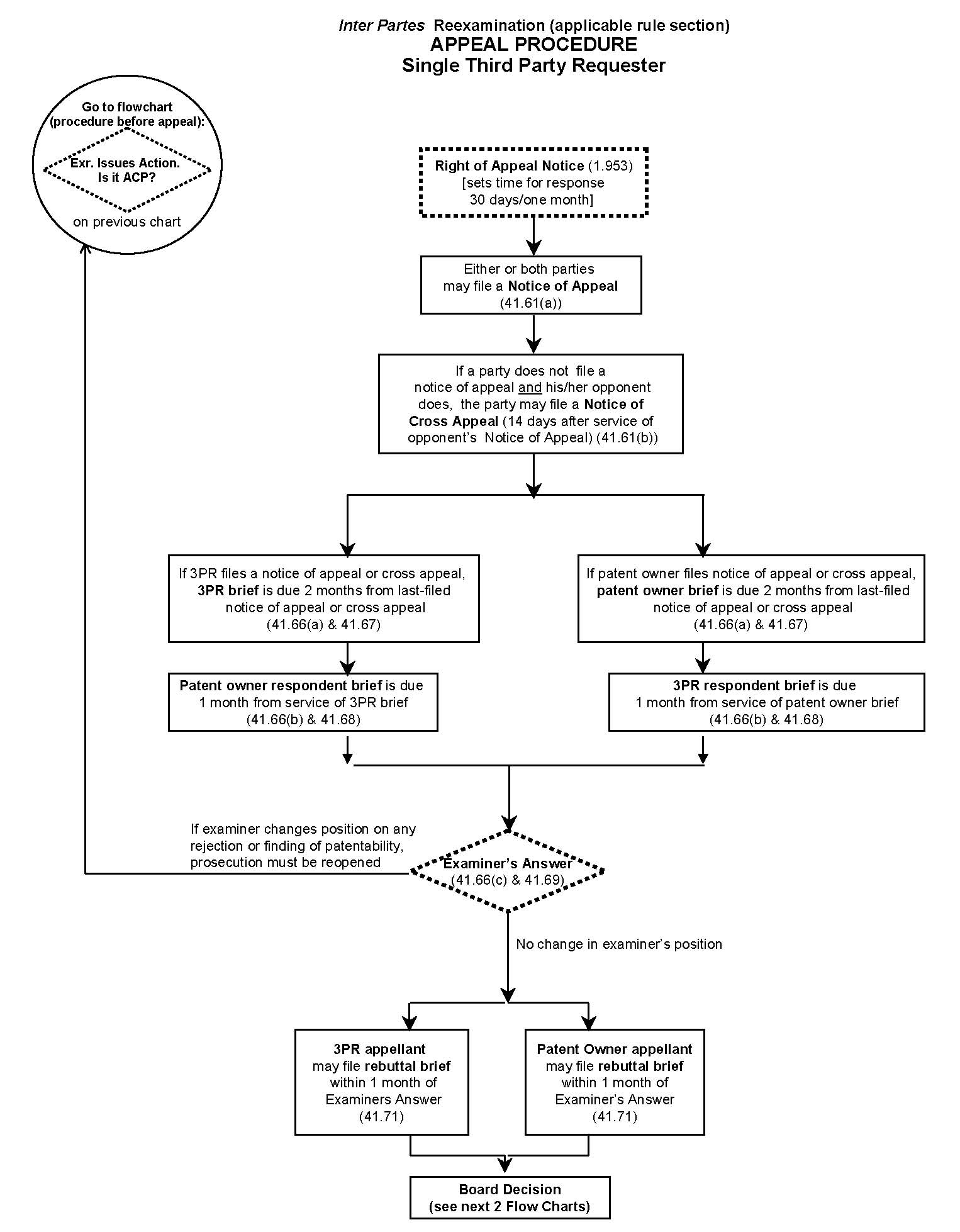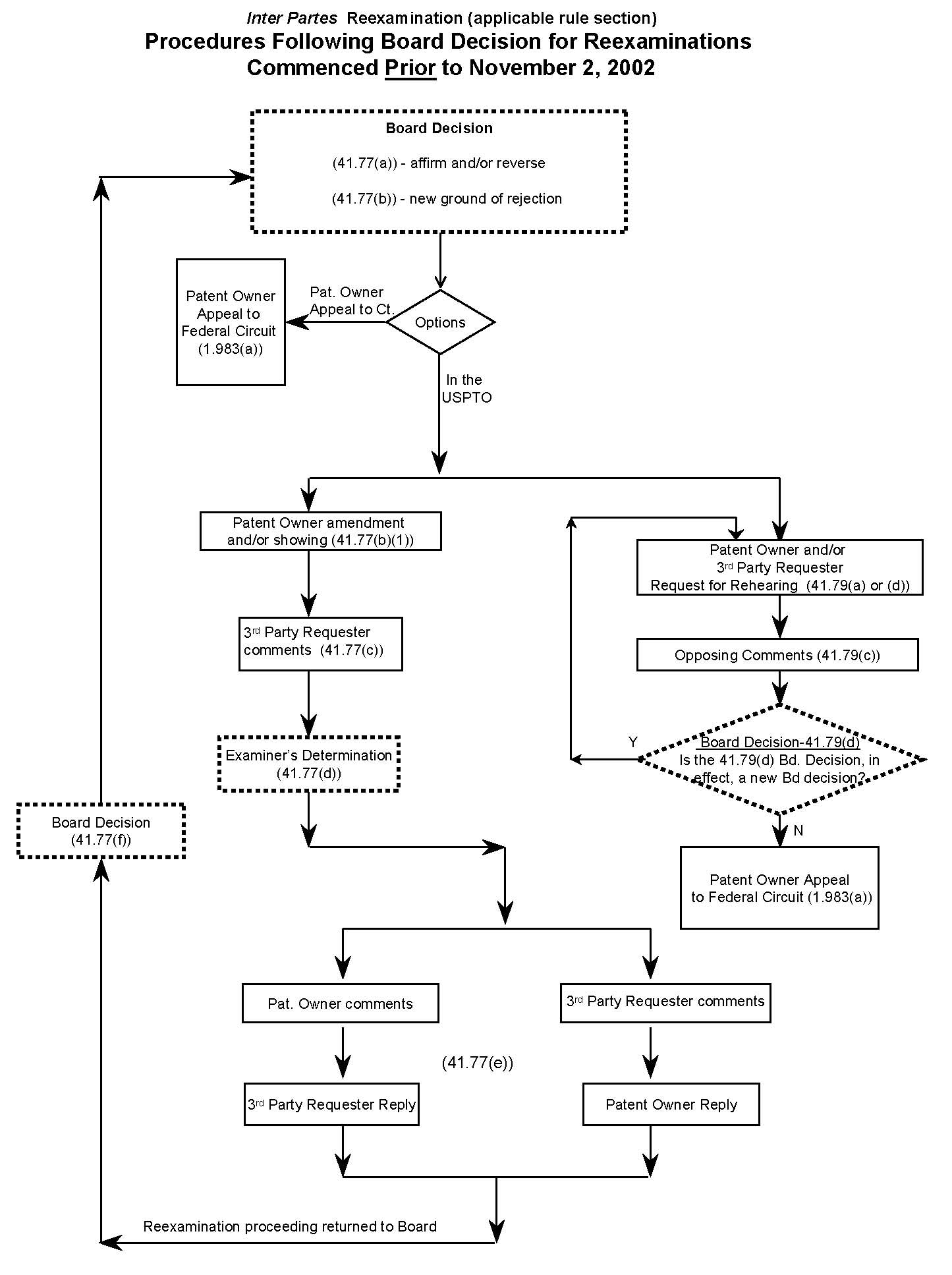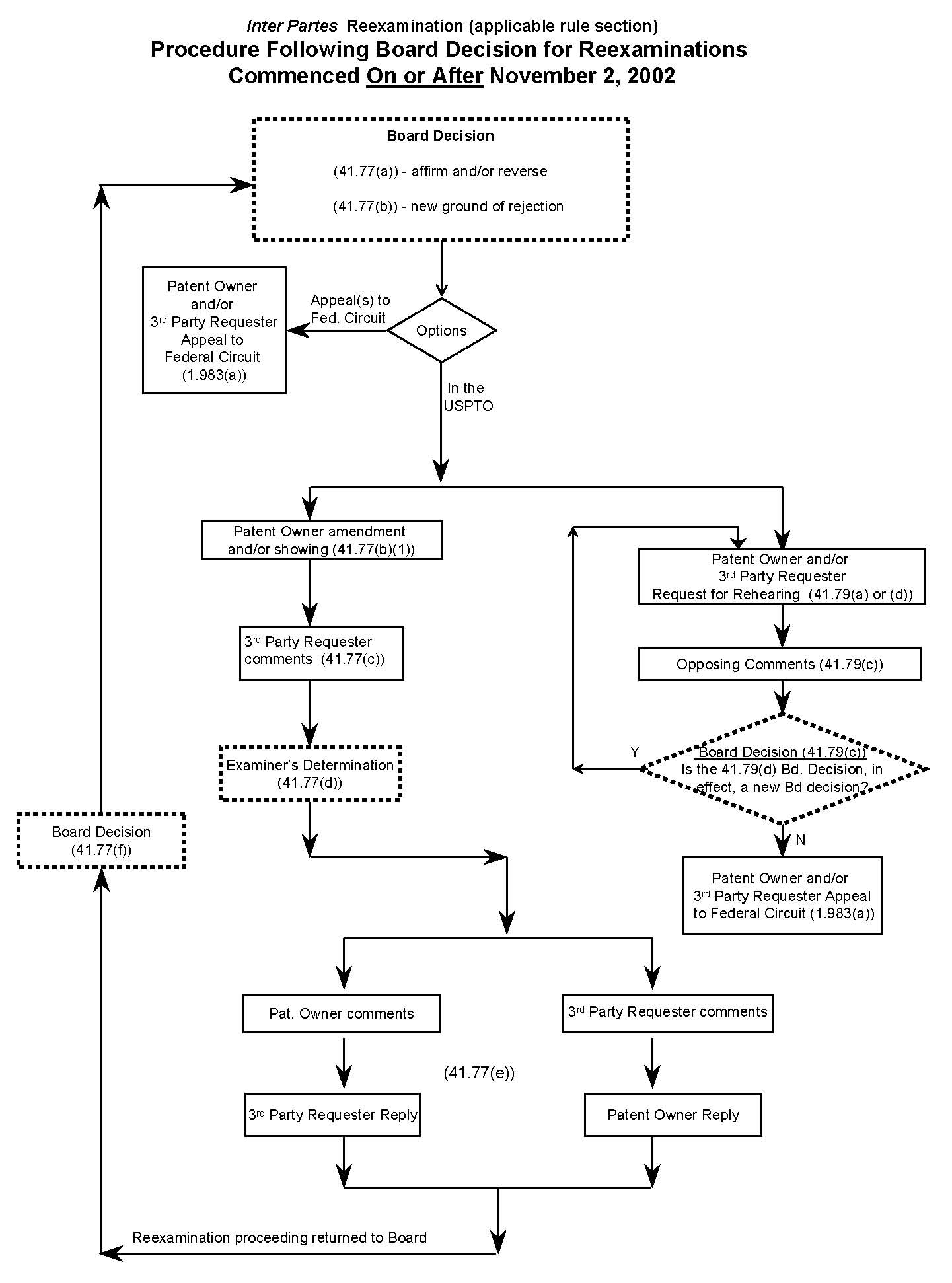2601 Introduction [R-07.2015]
The reexamination statute was amended on November 29, 1999 by the American Inventors Protection Act of 1999 (the AIPA), Public Law 106-113. The AIPA expanded reexamination by providing an "inter partes" option; it authorized the extension of reexamination proceedings via an optional inter partes reexamination procedure in addition to the existing ex parte reexamination procedure. See Title IV, subtitle F (§§ 4601 through 4608) of the “Intellectual Property and Communications Omnibus Reform Act of 1999,” S. 1948 (106th Cong. 1st Sess. (1999)). Section 1000(a)(9), Division B, of Public Law 106-113 incorporated and enacted into law the “Intellectual Property and Communications Omnibus Reform Act of 1999” (S. 1948). As a result, new sections 311-318 of title 35 United States Code directed to the optional inter partes reexamination proceeding were added by Public Law 106-113. The reexamination statute was again amended on November 2, 2002, by Public Law 107-273, 116 Stat. 1758, 1899-1906 (2002). Public Law 107-273 expanded the scope of what qualifies for a substantial new question of patentability upon which a reexamination may be based (see MPEP § 2642, POLICY IN SPECIFIC SITUATIONS, part A), expanded the third party requester’s appeal rights to include appeal to the U.S. Court of Appeals for the Federal Circuit (see MPEP § 2679), and made technical corrections to the statute. See the 21st Century Department of Justice Appropriations Authorization Act, TITLE III - INTELLECTUAL PROPERTY, Subtitle A - Patent and Trademark Office, Sections 13105 and 13106, of the “Patent and Trademark Office Authorization Act of 2002” - Enacted as part of Public Law 107-273 on November 2, 2002.
The present chapter is directed to inter partes reexamination procedure.
Upon enactment of the AIPA, 35 U.S.C. 312(a) provided, as to the standard for granting an inter partes reexamination request, that “the Director shall determine whether a substantial new question of patentability affecting any claim of the patent concerned is raised by the request, with or without consideration of other patents or printed publications….” The Office has referred to this standard as “SNQ.”
The Leahy-Smith America Invents Act (the AIA), Public Law 112-29, 125 Stat. 284, was enacted September 16, 2011. Section 6(c) of the AIA replaced the inter partes reexamination process, effective September 16, 2012, with a new inter partes review process, such that on or after September 16, 2012 the Office no longer entertains requests for inter partes reexamination but instead accepts petitions to conduct inter partes review. For any inter partes reexamination filed prior to September 16, 2012, the provisions of 35 U.S.C. 311 – 35 U.S.C. 318 as they were in effect prior to September 16, 2012, continue to apply to the inter partes reexamination proceedings.
Section 6(c)(3)(B) of the AIA provided a one year transition period (from inter partes reexamination to inter partes review) beginning September 16, 2011 and ending September 15, 2012, during which inter partes reexamination filings would continue to be accepted, but the standard for granting an inter partes reexamination request was revised to require, pursuant to 35 U.S.C. 312, that the information presented in a request for inter partes reexamination must show that there is a reasonable likelihood that the requester will prevail with respect to at least one of the claims challenged in the request.
As a result of the enactment of section 6(c) of the AIA, the following applies for inter partes reexamination:
- 1. Inter partes reexamination requests filed prior to September 16, 2011: With respect to any inter partes reexamination proceeding for which a request was been filed prior to September 16, 2011, the SNQ standard is the standard that was applicable in determining whether the request for inter partes reexamination would be granted. For reexaminations ordered based on the SNQ standard, the SNQ standard applies throughout the reexamination proceeding, even after September 16, 2011, or September 16, 2012. In addition, the inter partes reexamination provisions of 35 U.S.C. chapter 31, as amended by section 6(c)(3) of the Leahy-Smith America Invents Act, and 37 CFR §§ 1.902 - 1.997 and 41.60 - 41.81, except for the changes made in the Office Notice - Revision of Standard for Granting an Inter Partes Reexamination Request, 76 FR 59055 (September 23, 2011) (Final Rule) (i.e., with reference to the change in the standard for granting inter partes reexamination, and the termination of filing inter partes reexamination requests), apply throughout the reexamination, even after September 16, 2011, or September 16, 2012. Any citation to the rules in this chapter will be interpreted accordingly.
- 2. Inter partes reexamination requests filed on or after September 16, 2011, but before September 16, 2012: With respect to any inter partes reexamination proceeding for which a request was filed on or after September 16, 2011, the “reasonable likelihood” standard is the standard that was applicable in determining whether the request for inter partes reexamination would be granted. For reexaminations ordered based on the “reasonable likelihood” standard, then the “reasonable likelihood” standard applies throughout the reexamination proceeding, even after September 16, 2012. In addition, the inter partes reexamination provisions of 35 U.S.C. chapter 31, as amended by section 6(c)(3) of the Leahy-Smith America Invents Act, and 37 CFR §§ 1.902 - 1.997 and 41.60 - 41.81, including the changes made in the Office Notice - Revision of Standard for Granting an Inter Partes Reexamination Request, 76 FR 59055 (September 23, 2011) (Final Rule), apply throughout the reexamination, even after September 16, 2012. Any citation to the rules in this chapter will be interpreted accordingly.
- 3. Inter partes reexamination requests filed on or after September 16, 2012: With respect to any inter partes reexamination proceeding for which a request is submitted on or after September 16, 2012, the Office cannot grant, or even accord a filing date to, the request. See 37 CFR 1.913. In other words, the Office no longer entertains requests for inter partes reexamination but instead will accept petitions to conduct inter partes review, where appropriate.
For a patent issued from an application filed prior to November 29, 1999, the statutory inter partes reexamination option is not available, only the ex parte reexamination is available as a reexamination option (see 37 CFR, Sub-part D, 37 CFR 1.510et seq.).
All citations in this chapter to 35 U.S.C. Chapter 31 (i.e., 35 U.S.C. 311-318) are to the relevant statute in effect for inter partes reexamination prior to September 16, 2012.
See MPEP Chapter 2200 (§ 2209 et seq.) for guidance on the procedures for ex parte reexamination proceedings.
2601.01 Flowcharts [R-07.2015]
The flowcharts show the general flow for the various stages of inter partes reexamination proceedings. The first flowchart shows the procedures before appeal for a reexamination filed prior to September 16, 2011 (e.g., under the SNQ standard). Except for the standard for instituting reexamination, the same procedure pertains for an inter partes reexamination filed from September 16, 2011 through September 15, 2012. The second flowchart shows the appeal procedure with a single third party requester. The third flowchart shows the procedures following a Board decision for reexamination proceedings commenced prior to November 2, 2002. The fourth flowchart shows the procedures following a Board decision for reexamination proceedings commenced on or after November 2, 2002.





